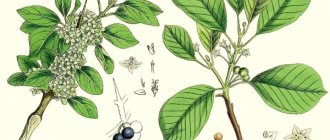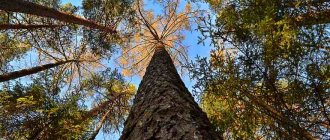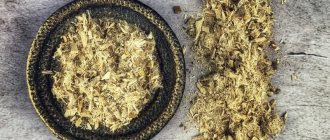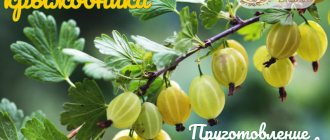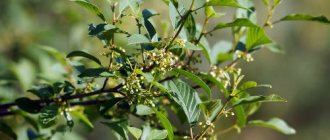Black poplar in folk medicine
Black poplar is a medicinal plant used in folk medicine since ancient times.
The plant is also used in traditional medicine. An ointment is prepared from poplar buds, which has analgesic and astringent properties. Products based on poplar buds have anti-inflammatory, analgesic, antimicrobial and antiviral effects. Medicines from the plant are recommended for the treatment of colds, rheumatism, hemorrhoids, cystitis, and vitamin deficiency. Poplar is also prized by perfumers. Essential oil of poplar buds is used to perfume soap. The leaves of the plant are used to make yellow dye for fabrics and also for tanning leather. Poplar wood is used to make sleepers, plywood, carpentry and turning products, matches and rayon.
Plant characteristics
Black poplar is a dioecious, fast-growing plant of the Willow family, reaching a height of thirty meters or more. The plant is equipped with a wide, spreading, highly branched crown, a powerful trunk, highly cracking light gray or black bark, depending on age, alternate dense, hard leaves that are green on top and lighter below, and small dioecious flowers collected in drooping earrings.
Poplar fruits are single-locular capsules containing a large number of seeds. The plant begins to bloom in mid-spring. Siberia, the Caucasus, Europe are the habitat of the plant. Pebble and sandbanks, light damp forests, coastal slopes are places where poplar grows.
Collection and preparation
The leaves, bark and buds of the plant are used to prepare medicines. It is recommended to harvest the buds during the period of sap movement, at the beginning of flowering. They should be hard, sticky and dense. Using pruning shears or a saw, small branches are cut off, then the buds are torn off from them.
Next, the raw materials must be thoroughly dried. First, it is spread on paper and dried under a canopy, and then dried in a special dryer. The temperature in this case should not exceed forty degrees.
As for the collection and harvesting of bark, it is collected in early spring from cleared or cut trees. The bark should also dry. Raw materials should be stored in a dry room with adequate ventilation in closed containers.
Composition, healing power
The plant contains a significant amount of:
- essential oils;
- phenylglycosides;
- flavonoids;
- resinous substances;
- malic and gallic acids;
- wax;
- gum;
- coloring matter;
- tannins;
- glycosides;
- ascorbic acid;
- carotene;
- fatty oils.
Medicines from black poplar have antiseptic, sedative, emollient, bactericidal, analgesic, disinfectant, antiallergic, expectorant, phytoncidal, diuretic, antipyretic and anti-inflammatory properties.
Remedies from the plant contribute to:
- elimination of inflammatory processes;
- eliminating migraines;
- normalization of the functioning of the central nervous system;
- improving digestion;
- normalization of metabolic processes;
- eliminating fever;
- rapid healing of wounds;
- decreased appetite;
- losing weight;
- therapy: gout, hemorrhoids, burns, rheumatism, arthritis, neuralgia, colds, furunculosis, migraine.
Folk recipes
Infusion for treating colds
Mix poplar buds in equal proportions with birch leaves, eucalyptus, plantain, oak bark, St. John's wort, calendula, lilac flowers, and knotweed rhizomes. Finely chop the ingredients and steam in three hundred milliliters of boiled water. The product should be infused for two hours. Drink 100 ml of filtered infusion at least three times a day. The duration of the therapeutic course is one month.
Poplar in the treatment of bronchitis
Combine 10 grams of dried crushed poplar buds with coffin leaves, rose hips, chamomile, flaxseed, mint, raspberry leaves, and Icelandic moss. Brew thirty grams of the mixture with boiled water - half a liter. It is recommended to take half a glass of the strained drink at least three times a day. The course of treatment is one and a half months.
Infusion for the treatment of pneumonia
Mix in equal proportions poplar buds with caraway fruits, mullein, lilac, viburnum, wild rosemary, motherwort, Chernobyl, flaxseed, marshmallow rhizome, sage leaves, raspberries, elecampane roots. Pour the raw materials into a thermos and fill with just boiled water - 300 ml. Leave the mixture for several hours, then strain. It is recommended to drink 100 milliliters of the drink three times a day. The duration of the course is one and a half months.
Remedy for the treatment of rheumatism
Combine lumbago with poplar buds, chamomile, string, knotweed, nettle, adonis, anise fruit, and burdock rhizome. It is necessary to brew two spoons of the mixture with boiling water - 500 ml. Leave the composition to brew. Drink a quarter glass of the drink four times a day.
Application of lotions
The product is recommended for use in the treatment of trophic ulcers. Brew a mixture of crushed plants: poplar buds, thyme herb, toadflax, steelhead, peony, rhubarb, knotweed, angelica, lemon balm, walnut, eucalyptus, watch, and podbel with boiling water. After an hour, strain the mixture and use it for lotions. The duration of the course is two months.
Diarrhea: eliminated with a decoction
Pour a few tablespoons of crushed plant buds into a saucepan and fill with water. Boil the mixture for ten minutes. Cover with a lid and leave to brew. Once the product has cooled, strain it. Drink 40 milliliters of the drink three times a day.
Tea will relieve migraines
Steam twenty grams of dried, finely chopped plant leaves in four hundred milliliters of just boiled water. Leave the composition for several hours. Consume half a glass of filtered mixture after each meal.
Burns: application of healing ointment
Mix forty grams of dry poplar leaves, crushed to a powdery consistency, with melted butter - 20 g. Mix the composition thoroughly. Use the product on burned skin.
Application of poplar oil
Lubricate the skin with plant oil for varicose veins. In addition, the product is recommended for use as a drug that improves hair growth. It is recommended to rub it into the roots twice a week, before going to bed. The next morning, the hair should be washed and rinsed with infusion: 20 grams of leaves brewed in a liter of boiling water.
Contraindications!
It is forbidden to take poplar products in the presence of gastrointestinal pathologies and pregnancy. It is not advisable to use the plant for medicinal purposes to treat small children. The appearance of weakness, nausea, and vomiting indicates poisoning. In this case, stop taking the drug, rinse your stomach and seek the help of a specialist.
Try not to take medications without the knowledge of your doctor, abuse medications and exceed the dosages recommended in prescriptions, and then the treatment will only benefit you.
Bark Recipes
You can purchase ready-made dried sedge bark in the pharmacy chain. These raw materials are offered by online stores. The average price of a 100 g package is 100 rubles. For 250 g you need to pay 155 rubles.
Decoction
Dried small fragments of poplar bark - 30 g - are poured into an enamel bowl. Boil for seven minutes at medium heat in 200 ml of water. After cooling, the broth is drained through a sieve. 30 ml is consumed every eight hours.
Article for you:
Medicinal properties of pine bark and its use in folk medicine
It has a hemostatic and antimalarial effect. Recommended for use for gout and sciatica. Relieves the condition of rheumatism and intermittent fever.
Infusion
Crushed dried poplar bark raw material - 5 g should be placed in a heat-resistant container and brewed with boiling water, pouring in 600 ml.
Let stand, covering the container with a towel, until it cools. The infusion, filtered through a gauze cloth, is divided in half, drinking in small sips over two days.
This infusion helps eliminate diarrhea and bloating. It is recommended to take it in order to normalize digestive processes and get rid of flatulence.
Tincture
Measure out 20 g of dried crushed sedge bark and pour it into a darkened bottle into which 200 ml of alcohol is poured.
Under a sealed stopper, the vessel is kept for 10 days in a dark cabinet with daily shaking of the contents. In filtered form, the tincture is taken every eight hours, 10 drops, dissolving them in 50 ml of water.
This remedy serves as the basis for compresses that relieve inflammation and pain in joint lesions, rheumatism, and gout.
Common poplar - botanical description
In botany, there are about 90 species of poplar, which belong to the willow family. Common on the territory of Eurasia are: pyramidal poplar (the most heat-loving trees), white or silver poplar and common poplar (black or sedge).
Black poplar is the most common type of poplar in Europe and Asia. A tall tree with a thick, straight trunk that very rarely bifurcates. The branches (and trunk) grow throughout the life of the plant, producing lateral shoots. The poplar bark is dark gray in color, strongly cracked and almost black at the base of the trunk. The crown is spreading, thick, even. The leaves are smooth, dark green, in the shape of a wide drop with an elongated, pointed top. The plant is dioecious, has spikelet, pendulous or erect inflorescences in the form of earrings. The fruits are capsules with a huge number of small seeds, which are “planted” on thin hairs (poplar fluff). The powerful root system of the poplar has a multi-tiered structure and firmly holds the plant, whose height can reach 60 meters.
Poplar - use in medicine
Poplar buds (both leaf and flower), foliage, and bark are used as medicinal raw materials.
Black poplar buds are collected in April-May, until they open. Due to the presence of a large number of bitter resins, essential oils, mineral salts, organic acids and vitamins, poplar buds are used in the form of:
- Extract from poplar buds and ointment from pounded buds mixed with butter or lard are used to treat arthritis, rheumatism, osteochondrosis, hemorrhoids (see other recipes), purulent wounds, furunculosis, and dermatological diseases.
- An alcoholic infusion of black poplar buds is used in the complex treatment of tuberculosis, chronic bronchitis (more about their treatment), and nervous excitability.
- Water infusions successfully treat inflammatory diseases of the genitourinary system (for example, trichomonas colpitis), superficial ulcers, dermatitis, neuroses, gout and “sluggish” intestines.
Poplar leaves are used in the form of infusions and decoctions, mainly internally. They have a healing effect similar to poplar buds, but a milder one. Fresh juice from poplar leaves relieves toothache. Dried poplar leaves are widely used to prepare infusions for soothing baths.
Poplar bark contains:
- Alkaloids. Substances that have a pronounced calming effect on the nervous system.
- Tannins. They have an anti-inflammatory, astringent, wound-healing effect.
- Glycosides are carbohydrate plant compounds that have antibacterial, vasodilating and metabolism-regulating effects.
Poplar bark (in the form of a decoction) is used in the treatment of diarrhea, cystitis, rheumatism, feverish conditions, colds and flu.
The medicinal properties of poplar deserve special attention : spermatorrhea (spontaneous release of sperm), vesiculitis (inflammation of the seminal vesicles), prostatitis, prostate adenoma. In the complex treatment of these diseases, a water or alcohol infusion of black poplar buds is used (orally), as well as an oil extract of the buds in the form of microenemas at night. Populin and salicyl (phenolic glycosides that break down into salicylic alcohol and acid), which are contained in the buds and bark of black poplar, effectively and gently relieve pain and fever, do not cause side effects and significantly improve the patient’s well-being.
The use of poplar for hair loss is effective. To treat alopecia (hair loss), an ointment is prepared from powdered black poplar buds and a fat base (vaseline or internal animal fat). This ointment stimulates the “work” of hair follicles, improves hair structure, nourishes the scalp and restores its barrier functions.
In its “pure” form it does not cause allergic reactions. However, it accumulates and transfers pollen from flowering plants, which has caused a widespread misconception about poplar as a strong allergen.
Despite the fact that drugs based on black poplar buds are used even in the complex treatment of cancer, the approach to treatment must be competent and individual. Poplar, the use of which is so widespread and effective, should not be used for self-medication. A consultation with a qualified doctor will help you make the most of the healing properties of poplar to solve your particular problems.
Black poplar: medicinal properties and contraindications
Black poplar, or sedge, is a common type of tree throughout Europe. This variety of poplar, as well as some other species, such as monolifera, balsam and pyramidal, are included in the list of medicinal plants. Due to its wide spectrum of action, medicinal raw materials of black poplar are used to treat various diseases, including the respiratory tract.
Pharmacies and herbal stores sell ready-made alcohol tinctures and dried buds. All medicinal products from black poplar can be prepared independently at home. Collecting raw materials will not be difficult, since black poplar grows abundantly in cities and rural areas of Russia and the CIS.
Black poplar, or sedge, got its name due to the dark gray, almost black color of its bark. The tree is tall with a wide crown, up to 30 meters in height, trunk diameter more than 1 meter. Black poplar is grown artificially as a field protection crop for landscaping streets and alleys. The tree is valued for its timber and is used in the perfume and textile industries.
In Russia, sedge grows in black soil regions; in the middle zone it is found mainly in river valleys. Black poplar is a lowland, winter-hardy, light-loving tree. The tree grows both singly and in groups; favorable places for it are: shallows, coastal sands, lake shores.
A variety of black poplar is the Italica type. This tree was first described in the 18th century in Italy. This species grows very quickly; it can gain up to 70 cm in height per year. This plant is an ecological filter that cleanses the atmosphere of harmful substances. Italica produces several times more oxygen compared to other plantings.
The pyramidal poplar differs from its counterpart in its higher trunk length (up to 40 meters) and crown: its branches are directed upward. Pyramid poplar is distributed mainly in the southern regions, Ukraine, and Transcaucasia.
Black poplar buds, its inner bark and leaves have medicinal properties. The buds contain the maximum amount of healing substances in the spring, until the scales diverge; they are dried in the open air without access to sunlight. When using electric dryers, the temperature should not exceed +35C. The inner bark is harvested in early spring.
Black poplar buds
Poplar buds contain vitamin C, organic acids, glycosides, resins, and essential oils.
Based on poplar raw materials, remedies are prepared that are effective against gout, joint diseases, urolithiasis, wounds and ulcers. In pharmacognosy, black poplar buds are used as an antirheumatic agent.
Due to their rich biological composition, kidneys are used to treat a wide range of diseases. Due to the presence of papulin glycoside, which is converted into benzoic acid as a result of the preparation, the medicinal raw material of black poplar produces a powerful antiseptic effect. When taken orally, the yield of uric acid sharply increases. Poplar buds are effective for bronchitis: they improve sputum discharge and cause the death of harmful microorganisms.
Back in the nineteenth century, an extract was obtained from the raw material, which was used to reduce strong sexual arousal and spermatorrhea. An infusion of poplar buds is widely used for kidney stones, cystitis, and prostatitis. Thanks to its sedative effect, it will help with neuroses.
Contraindications are: individual intolerance, prescribed with caution during pregnancy.
A medicinal ointment is prepared from the kidneys. It is used for joint diseases, fungal and purulent skin diseases, cracks. This ointment is an effective external remedy for the treatment of hemorrhoids.
Recipe for making ointment:
- Prepare an ointment base - it can be pork fat, Vaseline, butter.
- Grind the poplar buds in a mortar until it becomes flour.
- Pour raw materials into the heated fat mixture at the rate of 1 part powder to 4 parts fatty base.
- Stir the mixture thoroughly until it cools.
The resulting “poplar ointment” is generously applied to problem joints, hemorrhoids, and lubricates wounds.
Infusion from the kidneys is used as an antiseptic, sedative, for gout and rheumatism. Directions for use: 1 tablespoon with meals.
Contraindications for black poplar
The buds and leaves of black poplar are an excellent remedy with a minimum of contraindications. Compositions containing them should not be used in case of exacerbation of diseases of the stomach, intestines and cardiovascular system. also include pregnancy, breastfeeding, individual intolerance and allergic reaction . In any case, before starting treatment, you should definitely consult with your doctor.
Black poplar is a tree in which almost every part has medicinal properties. In addition, it contains phytoncides that cleanse the air of pollutants and microbes. Since ancient times, traditional medicine has used it to treat many diseases; its use remains relevant today. The minimum number of contraindications, ease of preparation of formulations and their high efficiency make this plant even more attractive.
Black poplar
Sedum tree, description, photo, buds, medicinal properties, tincture, leaves
Latin name Populus nigra
Poplar black Osokor
Black poplar or sedge. Tree of the willow family up to 25 m high.
The bark of young branches is yellowish, eventually turning into dirty gray.
The crown is wide and spreading.
The root system is well developed, the roots penetrate deep into the ground and spread many meters wide.
The leaves are alternate, long-petiolate, almost triangular, serrated along the edge. The apical buds are pointed, layered, serrated. The tree is dioecious.
The flowers are small, without a pericarp, collected in inflorescences-catkins. Men's earrings are 6-10 cm long, women's - up to 12 cm.
The fruit is an ovoid, bare, greenish-brown capsule with small seeds.
It blooms in March - May before the leaves bloom. Ripens in April - June.
Spreading
Osokor is distributed in the European part of Russia, Western and Eastern Siberia and Central Asia.
It grows in floodplains of rivers, along the shores of lakes, on pebbles and sandbanks.
Black poplar Osokor Application
The wood is used to make containers, cooperage, matches, paper and artificial silk.
The bark is used for tanning and dyeing leather yellow, and fabrics yellow, chestnut, chocolate and brown.
The leaves and bark have phytoncidal properties. Apple and pear trees treated with an infusion of poplar leaves become more resistant to diseases during the growing season, and the fruits are less affected by pests and are better stored.
The leaves are used for tanning leather and dyeing fabrics yellow, as well as in the perfume industry to flavor toilet soaps, and are used fresh to feed livestock. They can be dried for the winter for cows and horses. It is a good honey plant. Bees use glue from their buds to produce propolis.
Use in landscape design
They are used for landscaping parks, gardens, streets and populated areas, rapid afforestation of steppe areas and strengthening ravines.
Medicinal use
Poplar preparations have anti-inflammatory, analgesic, antipruritic, astringent, antimicrobial, sedative, antipyretic, diaphoretic and wound-healing effects. Used internally as a tincture for intermittent fever, inflammation of the bladder, colds and scanty menstruation in women, in the form of an oil extract for urolithiasis , externally for poultices for damage to nerves and tendon ligaments, as an ointment for joint diseases, trichomonas colpitis, purulent wounds, burns, severe itching, cracked lips and nipples, for staphylococcal and fungal skin diseases. Fresh juice from poplar leaves relieves toothache. When there is ringing and noise in the head, it is instilled into the ear.
Collection and processing of medicinal raw materials
The medicinal raw materials are the buds, bark and leaves.
The buds are collected in the spring, from thin branches, before the leaves bloom, dried in a ventilated area and dried in the sun or in a dryer at a temperature of 35–40°C.
Bark is collected in early spring from felled trees or sawed branches when cultivating plantings
Osokor black poplar medicinal properties
Preparations from poplar buds have anti-inflammatory, analgesic, antirheumatic, antipruritic, astringent, antimicrobial, sedative, antipyretic, diaphoretic and wound-healing effects. Energy impact. Poplar takes away negative energy from a person and reduces irritability.
Application in official and folk medicine
In folk medicine, leaf buds are used, which are collected in the spring, during the period of sap flow.
Tincture of poplar buds, prepared with 40% alcohol in a ratio of 1:10, is used for tuberculosis, rheumatism, gout, intermittent fever, inflammation of the bladder, colds and scanty menstruation in women. Take it 20-30 drops 3-4 times a day with meals.
Kidneys boiled in vegetable oil in a ratio of 1:10 have an analgesic effect in case of urolithiasis. Take 1 teaspoon of oil 3 times a day with meals. An infusion of well-steamed fresh buds has a positive effect in cases of damage to nerves and tendon ligaments. To prepare it, pour 1/3 cup of raw material into 1 cup of boiling water and cover with a warm cloth. The drug is applied to the affected area. The dressing is changed every day.
Ointment from poplar buds is used externally for gout, joint disease, trichomonas colpitis, boils, purulent wounds, burns, hemorrhoids, severe itching, cracked lips and nipples, and staphylococcal and fungal skin diseases. To prepare it, 3 tablespoons of well-chopped kidneys are gradually mixed with 3 tablespoons of unsalted butter. Store in the refrigerator for 5-10 days.
To prepare an infusion of buds and leaves, pour 2 tablespoons of one or another crushed raw material into 1 glass of hot water, boil over low heat for 5 minutes, leave in a warm place for 1 hour and filter. Take 1-2 tablespoons 3-4 times a day with meals.
Fresh juice from poplar leaves relieves toothache. For ringing and noise in the head, 2-3 drops are instilled into each ear, warm. In this case, the auricle is slightly pulled towards itself.
The yield of essential oil from the kidneys is up to 0.7%.
Treatment of diseases
Such accessible plant materials as poplar bark, as well as tree buds and leaves, are worth having in your home supplies, providing yourself with effective products made in accordance with proven folk recipes.
Healing ointment
In order to eliminate itching of the scalp, dried poplar bark must be crushed into flour. Combine it with Vaseline in a ratio of 1:4.
You can use unsalted fresh butter as a base in the same proportions. It is necessary to apply homemade cream to the scalp every evening for severe itching.
From temperature
The inner layer of bark removed from a poplar trunk contains large quantities of salicin. This substance is responsible for its analgesic and antipyretic properties. It is considered safer than aspirin.
Use fresh measles. It is removed from the branch and the softer inner layer is separated. Cut it into pieces, which must be thoroughly chewed and washed down with purified cool water. Eat 2 tbsp at one time. l. healing raw materials. Repeat every eight hours.
Article for you:
Medicinal properties of larch bark and its use in folk medicine
For a cold
To ensure a reduction in the temperature caused by a cold, children over the age of five will need small dry fragments of sedge bark - 1 tbsp. l.
Pour them into an earthenware glass and steam with a glass of boiling water. Leave under a terry towel for 10 minutes. The finished antipyretic infusion is cooled, and then expressed through a sieve and given to the child to drink. The procedure is carried out twice a day.
For the treatment of wounds
In order to speed up the healing of boils and wounds, young poplar leaves that have not yet lost their stickiness should be collected.
They are carefully chopped and ground in earthenware dishes using a wooden spoon. With intensive kneading, Vaseline is added, trying to obtain a viscous homogeneous mass. Twice a day, apply the ointment to the affected area and fix it with a bandage for an hour.
For rhinitis
After grinding fresh spring poplar foliage, squeeze out the juice using gauze. It should be immediately injected into the ear canals, four drops at a time. This remedy quickly eliminates pain and helps relieve inflammation.
For urolithiasis
Poplar buds collected in early spring are placed in enamel dishes. Add vegetable oil, maintaining a volume ratio of 1:10.
Boil the mixture over low heat for 10 minutes. After filtering through a gauze filter, 1 tsp. consume the oil extract before meals.
This remedy will help speed up the treatment of sinusitis. Two drops should be administered into each nostril every six hours. They use it at home for cervical erosion by soaking cotton swabs in poplar oil and placing them in the vagina overnight.
For prostatitis
Dried kidneys - 3 tsp. grind in a mortar. Pour into an enamel ladle. Steam 250 ml of boiled water. Cover the dish with a tight lid and keep for three hours.
The healing infusion is poured onto double-layer gauze and squeezed out. 3 tbsp. l. Take the drink before meals four times a day.
Article for you:
Medicinal properties of rowan bark and use in folk medicine
For trophic ulcers
If the most effective option is required, accelerating the healing of trophic ulcers, dried poplar buds are crushed in a mortar. Combine the powder with thickened honey in a 2:1 ratio.
From the resulting mass, cakes are made every eight hours, which should be kept on the affected area for three hours.

